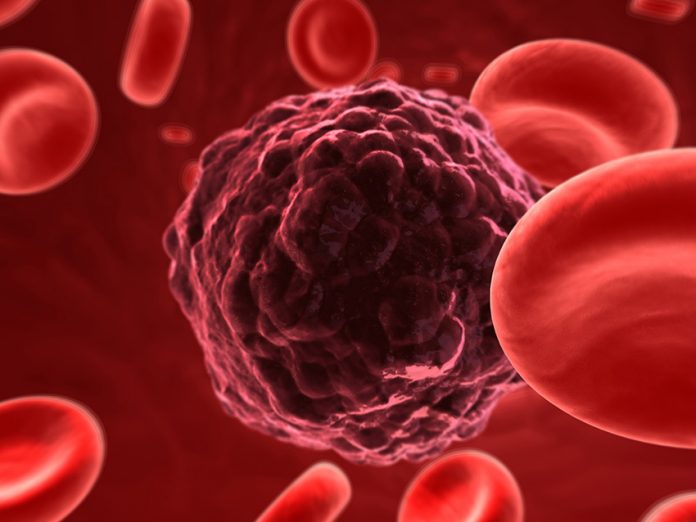Photodynamic Therapy is a treatment that combines a photosensitizing drug, visible light and oxygen to kill cancer cells. Professor Eli Glatstein explains
For this treatment to have a biological impact, these 3 factors must be together at the same time, in the same place. Because PDT depends on visible light, the treatment naturally spares critical normal tissues that lie beneath cancer. Red (or near-infrared) light is the most penetrating in human tissues. This can be simply illustrated by the classic ‘experiment’ of placing one’s fingers together over the head of a flashlight turned on; only red light gets through where the fingers come together. With recent innovations in diode laser and fibre-optic technologies, it is now relatively straightforward to deliver light of a suitable wavelength to match the desired depth of tissue penetration and the absorption spectrum of the photosensitiser.
When the photosensitising agent is administered IV, it goes ubiquitously into virtually all cells and tissues. However, most tumour tissues appear to take longer to clear the photosensitiser, leading to a modest (~2-3 fold) tumour selectivity. Porfimer sodium is the only intravenous photosensitiser that is currently FDA approved for cancer treatment in the USA. In the EU, Temoporfin is also approved for cancer treatment, but both photosensitisers are retained in normal skin and require the patient to avoid bright (sun) light for about 6 weeks after drug delivery. Nevertheless, these photosensitisers have been successfully used to treat a wide variety of tumours, including head and neck, lung, oesophagal, bladder, cervical and skin cancers, as well as malignant pleural mesothelioma. This selectivity can be enhanced by encapsulating the photosensitiser in a nanoparticle that targets molecular abnormalities specific to tumours. Verteporphin, an early version nanoparticle photosensitiser has been highly successful at treating age related (wet) macular degeneration and is currently in clinical trials as a treatment for prostate and pancreatic cancers.
Except at specialised centres of excellence, most of the PDT throughout the world is aimed at relatively small non-melanomatous skin cancers or GI surface lesions that can be approached by endoscopic techniques. At Penn, we are using PDT to ‘light up’ the entire pleural cavity at the time of surgical resection for patients who have malignant miliary seeding of the pleural surface, which is generally considered an incurable condition. With this approach, we have extended the median survival of patients with advanced stage malignant pleural mesothelioma to more than 3 years (from 12-18 months) while allowing a surgical procedure that spares the underlying normal lung.
Advantages of PDT
While PDT is non-ionising radiation therapy, this treatment primarily targets intracellular membrane structures such as mitochondria and lysosomes. Unlike ionising X-ray therapy, DNA does not appear to be the target for PDT, so that PDT does not induce new mutations into cancers during treatment. PDT also kills cancer cells through different mechanisms than traditional chemotherapy. Thus, PDT’s advantages are that it can spare normal tissues far better than other forms of cancer treatment and because DNA is not its target, treatment-induced cancer is unlikely to occur. Moreover, techniques to accurately measure light and photosensitiser in real-time can even provide the ability to continuously readapt the treatment either before or even during an individual treatment session to further optimise treatment outcomes. Combined with targeted photosensitisers, PDT presents a unique opportunity for a more personalised, rational approach to cancer therapy.
Limitations of PDT
In practical terms, the only real limitation to the application of PDT for the treatment of cancer is the imagination required to get the light where it is needed. For this purpose, treatment at the time of surgery provides an opportunity to deliver light internally where the cancer is most likely to recur the following removal. Relatively simple modifications can be used to avoid unintentional skin burns during surgery, such as using optical filters on the operating room lights and making sure to cover all of the patient’s skin with sterile drapes/towels. In addition, light can be introduced directly into a tumour mass by interstitial techniques. This means inserting fibre-optic delivery devices directly into a tumour mass through sterile techniques similar to those that have been employed for brachytherapy, a form of ionising radiation therapy in which radioactive sources are introduced directly into tumours. For PDT, instead of inserting radioactive isotopes, fibre-optics are used to deliver light from an appropriate laser source. This method has been used to successfully treat head and neck, prostate and pancreatic cancers, but could extend to assist the minimally invasive treatment of brain, breast, lung, bladder and gastrointestinal cancers. Thus, PDT is a critical weapon in the war on cancer. Like all cancer therapies, PDT should not be considered as “the” answer for cancer treatment but rather as an important tool in the medical armamentarium that can be adapted to an individual’s cancer to provide personally optimised cancer therapy.
Professor Eli Glatstein
Department of Radiation Oncology – Perelman Center for Advance Medicine
Tel: +1 215 349 8407
glatstein@uphs.upenn.edu
http://www.med.upenn.edu/apps/faculty/index.php/g275/p15564
Please note: this is a commercial profile











